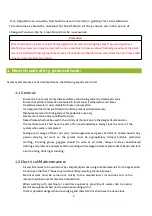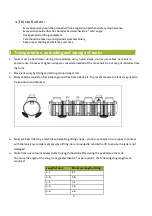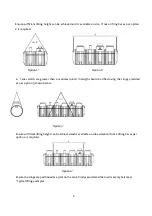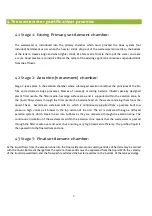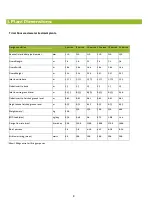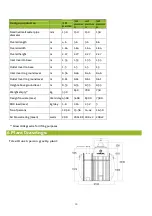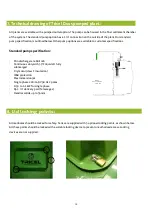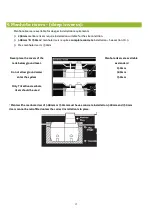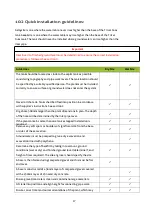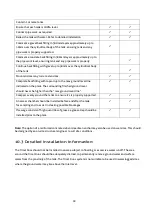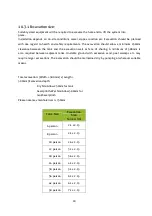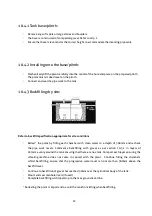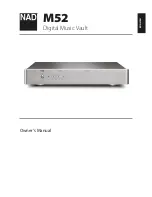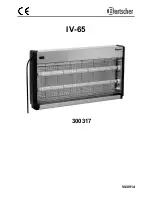
7
4. The wastewater purification process:
4.1 Stage 1: Existing Primary settlement chamber:
The wastewater is introduced into the primary chamber which must proceed the Duos system (not
included). Settlement occurs when the heavier solids, drop out of the wastewater and settle to the bottom
of the tank to create sludge and when lighter solids, like fats or oils, float to the top of the water to create
a scum. Good practice is to install a filter at the outlet of the existing septic tank to reduce suspended solids
from the effluent.
.
4.2 Stage 2: Aeration (treatment) chamber:
Stage 2 takes place in the aeration chamber where submerged aeration combines the principles of the bio
film and activated sludge processes. Masses of naturally occurring bacteria inhabit specially designed
plastic filter media. The filter media, has large surface area, and is supported within the aeration zone. As
the liquid flows slowly through the filter media the bacteria feed on the waste removing them from the
liquid. These bacteria are sustained with air, which is continuously supplied from a purpose built low
pressure, high volume air blower in the top section of the unit. The air is delivered through a diffused
aeration system, which break the air into bubbles as they are dispersed through the aeration zone. The
continuous circulation of the wastewater within the aeration zone means that the wastewater is passed
through the filter media over and over, thus ensuring very high treatment efficiency. The purified liquid is
then passed into the final settlement zone.
4.3 Stage 3: Final settlement chamber:
As the liquid flows from the aeration zone into the final settlement zone small quantities of bacteria may be carried
with the liquid. Before discharge from the system, these solids must be separated from the liquid. With the velocity
of the liquid slowed down and the flow path maximized the bacteria settles to the bottom of the tank as sludge
.



